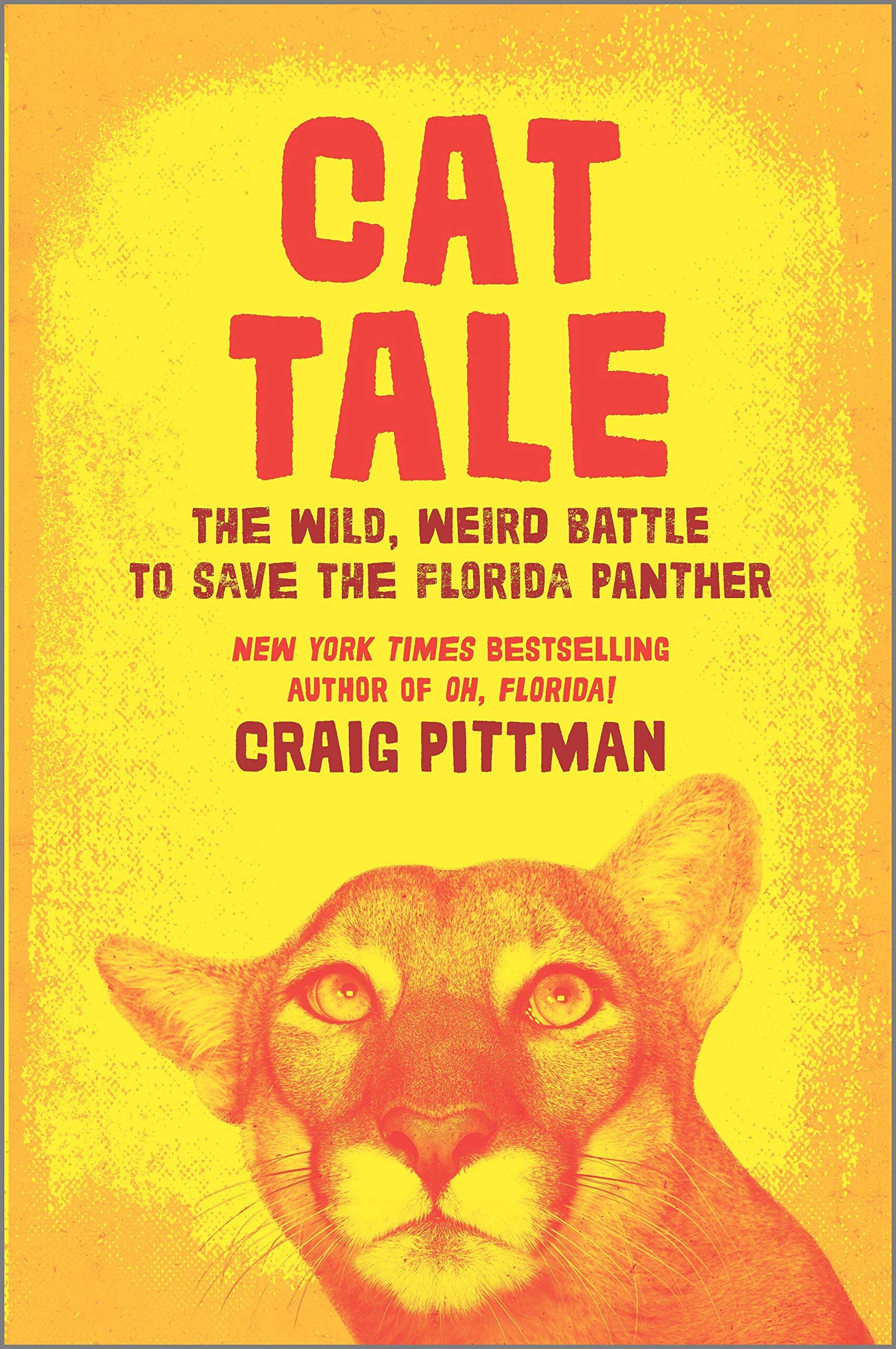Cat Tale by Craig Pittman
/
Cat Tale: The Wild, Weird Battle to Save the Florida Panther
by Craig Pittman
Hanover Square Press, 2020
Tales of extinction in the modern world are certainly not atypical, but it is certainly rare for one to have a happy ending. An unlikely story of an apex predator resurrected from what appeared to be certain death, Craig Pittman’s Cat Tale: The Wild, Weird Battle to Save the Florida Panther will give readers a whole new meaning to the phrase, “rooting for the Florida panthers.”
By 2016, the Florida panther would go the way of the dodo bird, a 1992 study forecasted. Indeed, in the 90s, the majestic yet ferocious animal’s survival had the odds stacked against it: rampant development of Florida land increasingly robbed them of their habitat, cars flying down interstates regularly flattened surviving members, and hunters not only targeted the panther’s prey, but sometimes set their sights on the cats themselves. That on top of serious health issues resulting from the inbreeding the small population was practicing meant the Florida panther needed a champion if it was going to see the 2020s.
Fortunately for the big cats, a handful of such people stepped forward to come to the rescue of Florida’s state animal. These are the individuals Pittman follows throughout this book, which begins with the realization that, at the time, there was a fundamental lack of knowledge about the nocturnal creatures. It turns out the elusive animals had done a good job of remaining that way through much of Florida’s modern development. Though much was known about other Florida species when the project to save the panther loosely got started in the 1970s, details about the big cats themselves were as sparse as actual sightings of them in Florida. Pittman states bluntly, “how do you protect an animal that you know almost nothing about?”
Scientists answered that question by gathering data in order to get a state-of-the-species big picture. To do so, they chased down and tranquilized remaining cats to collect samples and outfit the animals with tracking collars in order to keep tabs on their movements after they returned to consciousness. The team immediately faced backlash from the community over safety complications surrounding putting collars on wild animals. The uproar ultimately quieted, but turned out to be only a small taste of the often outrageous stumbling blocks that were to come.
Given that this is a story of Florida, a level of absurdity is expected, if not outright required. Pittman happily obliges with a number of colorful caricatures, from a stetson-wearing, expert animal tracker to a media-manipulating turncoat scientist. Though the cast of characters becomes large as new additions join the fray as the saga goes on, distinctive and memorable portraits of each of the players keeps clear what in another author’s hands would be confusing and not nearly as readable. Pittman is at his best when retelling some of the more wacky scientific endeavors undertaken in the name of rescuing the panther, inserting humor in just the right spots to earn belly laughs.
The author’s humor doesn’t always hit its mark. As he notes about himself in the text, he “can seldom resist the urge to play smart aleck,” a quality he feels comfortable extending to his prose. His style gets chummy with the reader, at times making the story feel like a belly-up-to-the-bar hometown tale, and in other moments, like a surrender of his authorial authority. There are many sections of the book in which the author seems to forget what he’s writing is not a voiceover script for a documentary; his dramatic closing points to chapters give the feeling that he’s setting up readers for a commercial break rather than smoothly introducing the next section.
What his style does achieve, however, is a feeling of camaraderie with the reader, similarly looking on in horror as government agencies, politicians, land developers, and even some Florida residents actively worked against efforts to revitalize the panther population in what was and still is the animal’s native land. Human entitlement leaps off the page higher than the panthers themselves; if Peter the Great built the formerly swampy St. Petersburg on bones, so too did Florida - the state with its own St. Petersburg - when building ill-placed, damp universities on the bones of Florida wildlife.
What the author never stabs a finger at directly is that this story spans decades; one development in the narrative is often followed by a quick, one-sentence acknowledgement that years passed before the next event the author details, a holdup often caused by bureaucratic squabbling. The red tape was long enough to play cat’s cradle with, keeping idle hands busy while the panthers died out in front of the eyes of the world. As the book progresses, the frustration with the unnecessary and destructive delays reaches the hair-pulling level. Though the end result was a largely positive one, with healthy panthers roaming Florida once more, this story makes clear that even a truly dedicated team may not be able to save the next animal from extinction if such obstacles promise to impede forward progress. And there will certainly be a next animal.
As such, a full-length reading of Cat Tale may not be quite as hopeful and uplifting as the premise suggests, but it does tell an honest, entertaining story of an apex predator being brought back from the brink, despite all the odds against it. Pittman’s history with this story and its actors clearly shows; his research is robust and the tale is lovingly told. As only a true Floridian could, Pittman makes sense of the bizarre and clears a path through the chaos in this parable of a species holding onto life by its claws in an inhospitable world.
—Olive Fellows is a young professional and Booktuber (at http://youtube.com/c/abookolive) living in Pittsburgh.
